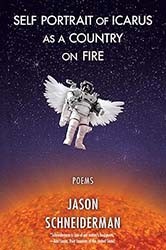Love in the Blitz is a rare literary and historical find. It consists of a long-lost compilation of letters written by a woman to the man she loves, spanning seven years — including all of World War II. The woman, Eileen Alexander, is English, Jewish, emotionally sensitive, and intellectually promising. Her background is prestigious and cosmopolitan. Her father, born in Poland, became an esteemed barrister in Cairo, and then in England. Her mother descends from an illustrious Sephardic Italian family. We meet Eileen in the late 1930s, when she is an ambitious university student studying English at Cambridge University. Particularly fond of Arthurian legend (especially the romantic parts), she finds herself flirting with a Jewish law student, a bookish hunk named Gershon Ellenbogen.
Another suitor appears in the letters — the young Abba Eban, then known as “Aubrey” — and his presence fleshes out the emotional context of Eileen and Gershon’s lives. While Eileen is fond of Aubrey, she falls quickly and passionately in love with Gershon, but the presence of this “third wheel” (who will become world famous as Israel’s first Ambassador to the United States) makes for fascinating reading. Through the years, we experience Gershon’s induction into British Air Intelligence, Eileen’s leaving college to work for the Air Ministry, and Aubrey Eban’s burgeoning interest in Zionism. History is, of course, also fraught during these formative years. Through Eileen’s eyes we see her and her family experience the air raids and communal shelters. We hear of her father’s deep dread of the Nazis, and his plea (ignored by the family) that they escape to Canada. Still, little is said by Eileen herself about the destruction of the Jews in Europe, or of the stirring birth of political Zionism as a response to antisemitism. The young Eileen who writes these letters is too secular, sheltered, and privileged to worry much about the state of her co-religionists. Thus, while interesting historically, her missives are mainly helpful for their insight into the romantic and sexual mores of a 1940s Jewish girl in England.
Young Eileen’s first missives to Gershon are pointedly clever (she seems to be trying to impress him), and full of imperfectly hidden desire. The awkwardness of a scholarly young woman trying to navigate the borders between friendship and romance are charmingly displayed here. For example, she refers to any kind of sexual exploration (in her case, her suitor’s hands lightly brushing over her breasts) with the slang word, “mollocking,” and disdains the very thought of either of them acknowledging her lower female anatomy. As the years go by, and the lovers separate, she pleads with Gershon to master his urges – and not to have sex with anyone else. While we never read Gershon’s responses, we can see the deepening of their commitment in Eileen’s open and ardent tone. She wants to be his wife; she adores him; he is perfect, and the word “darling” is used many times in each of her letters. Though she was a promising student at Girton College, Cambridge (graduating with a “First” in English literature), Eileen seems to apply the poetics of her education not to a future career as a professor, but to what she deems the highest art of all: the art of loving someone. Indeed, as she herself expresses, loving Gershon becomes the center of her life. And though we read on the book’s jacket that Eileen became a teacher, author, and translator of many of George Simenon’s novels, her literary career seems less than what it might have been.
Still, these letters redeem that lack, presenting us with an almost novel-like portrayal of the heart of a young woman. It is noteworthy that these letters might have easily been lost to the world, and with them, a small slice of British Jewish history. They were fortuitously found at a garage sale, where the price for a huge stack of papers including the letters was less than a hundred dollars. Their worth to the reader, on the other hand, may be incalculable.





